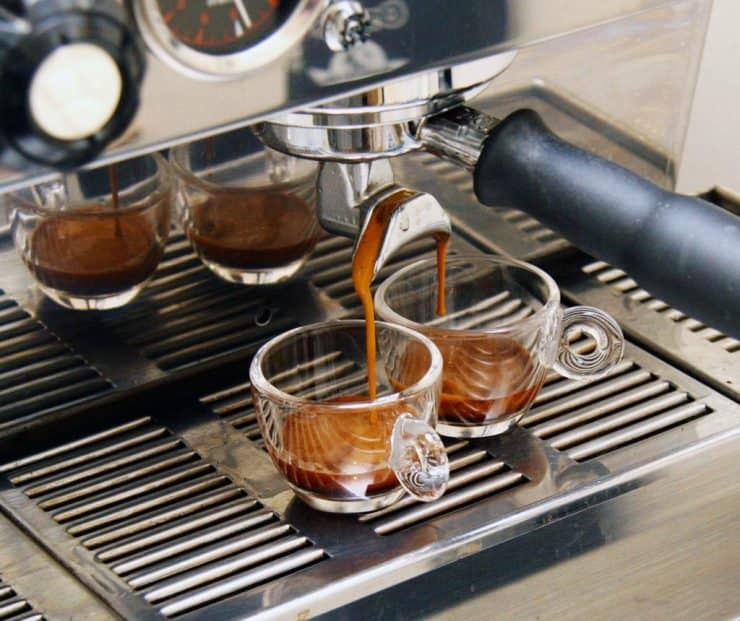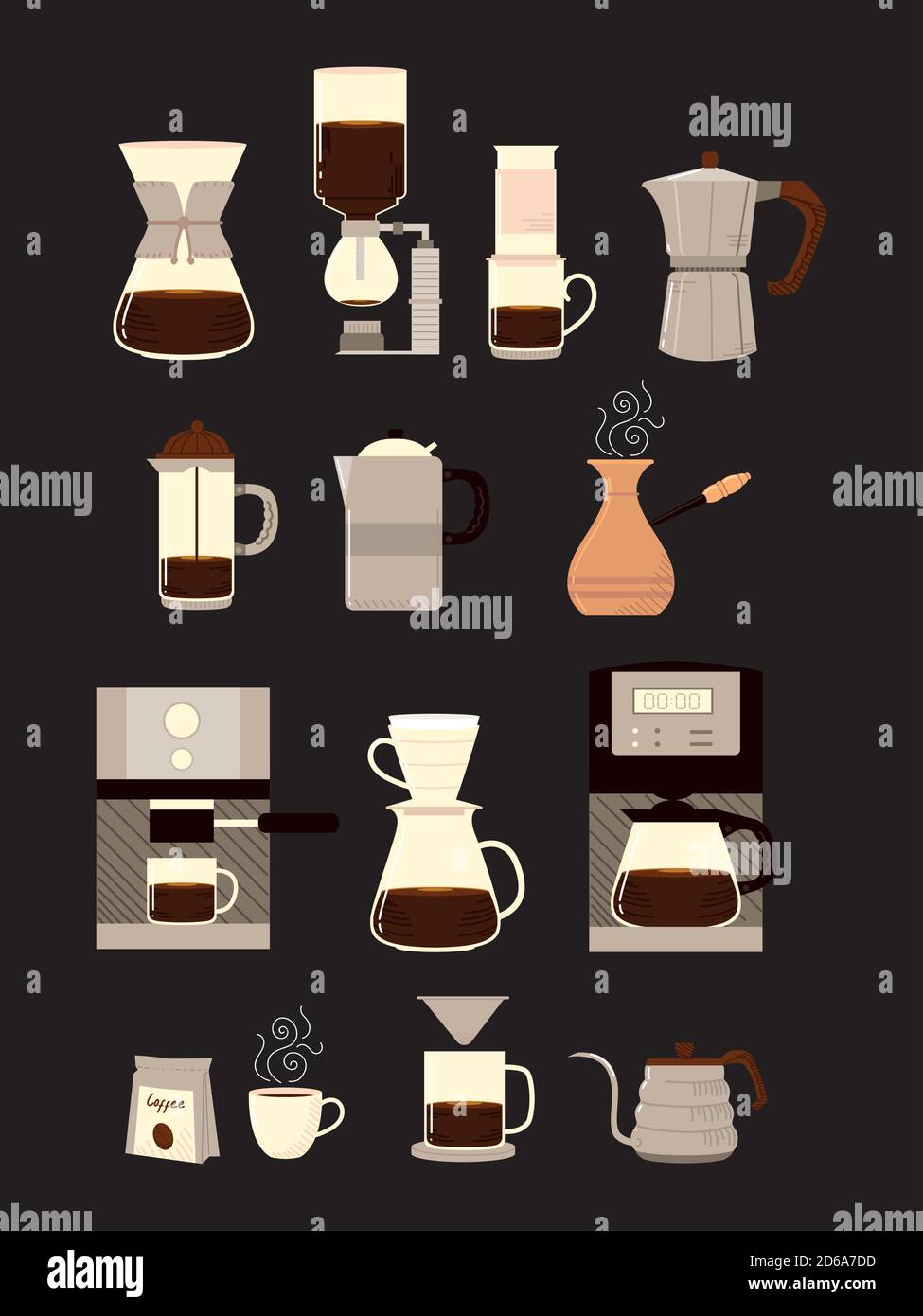Coffee Brewing Methods Demystified: From French Press to Cold Mixture
Coffee Brewing Methods Demystified: From French Press to Cold Mixture
Blog Article
Checking Out the Art of Coffee Brewing: A Comprehensive Guide to Refining Your Cup
The art of coffee developing is a multifaceted technique that combines scientific research with personal expression, where the option of beans, water high quality, and brewing methods merge to create a refined sensory experience. Understanding the nuances of different coffee beans, specifically the distinctions in between Arabica and Robusta, is essential for any fanatic. The choice of appropriate devices and careful interest to developing specifications can significantly influence the final outcome. As we discover these components, one must take into consideration just how even minor modifications can lead to profound changes in flavor and scent-- what might these adjustments expose about your excellent mug?
Recognizing Coffee Beans
To really appreciate the art of coffee developing, one have to initially understand the foundational component: coffee beans. These little seeds, typically stemmed from the Coffea plant, are vital in figuring out the flavor account, scent, and general top quality of the made beverage. Coffee beans primarily fall under two groups: Arabica and Robusta. Arabica beans, understood for their fragile tastes and higher acidity, are frequently preferred by lovers. On the other hand, Robusta beans have a more powerful, more bitter preference and higher caffeine content, making them appropriate for coffee blends.

Furthermore, the handling technique-- whether washed, natural, or honey-- influences the beans' final taste. Comprehending these components permits makers to select the right beans that align with their chosen flavor account, inevitably enhancing the coffee brewing experience. coffee brewing methods. This comprehension is important for any person desiring grasp the craft of brewing the best cup of coffee
Developing Methods Explained
Many enthusiasts locate that the choice of brewing technique significantly impacts the final flavor and scent of their coffee. Each technique harnesses various removal methods, affecting the coffee's character and splendor.
Drip developing, one of the most popular methods, makes use of an equipment to trickle warm water through ground coffee, generating a regular and clean mug. French press, on the other hand, immerses coffee grounds in warm water, allowing for a fuller body and more durable taste, as oils and great bits stay in the mixture.
Pour-over brewing provides a precise strategy, where water is manually poured over coffee grounds, permitting accurate control over removal time and temperature level, leading to a nuanced and intense mug.
Espresso, a concentrated coffee made under stress, is understood for its strong flavor and velvety texture, functioning as the base for numerous coffee drinks, including coffees and cappucinos.
Important Tools Needed
The foundation of any kind of successful coffee developing procedure exists in quality equipment tailored to your recommended approach. A reliable coffee grinder is vital; fresh ground beans dramatically improve taste and aroma.
Following, consider your brewing gadget. Alternatives vary from drip coffee machine and pour-over configurations to French presses and espresso devices. Each technique provides unique flavor profiles and brewing methods, so pick one that straightens with your preference preferences.
An exact scale is also indispensable, permitting you to gauge coffee and water properly, which is important for consistency. Furthermore, a thermostat can aid keep track of visit their website water temperature, as it straight influences extraction high quality.
Learning Water Top Quality
The high quality of water used in developing coffee plays a considerable function in identifying the last flavor account of the cup. Numerous elements add to water quality, consisting of mineral material, pH degree, and overall pureness. Ideally, water should be without impurities and contaminations, as these can detrimentally affect the taste of coffee.
Minerals, such as calcium and magnesium, enhance the removal of tastes from the coffee grounds, while preserving a balanced pH degree-- around 6.5 to 7.5-- is necessary for ideal extraction. Water that is also soft may result in under-extraction, resulting in weak or sour flavors, while excessively tough water can create a bitter or extreme mug.
For the finest outcomes, filtered water is recommended, as it lowers the visibility of chlorine and other unfavorable compounds often discovered in faucet water. Furthermore, think about making use of water with an Overall Dissolved Solids (TDS) degree in between 150-200 ppm, which is usually optimal for coffee developing. By mastering water high quality, you can lay a strong structure for achieving a continually superb mug of coffee, allowing the unique characteristics of your chosen beans to shine through.

Tips for Taste Enhancement
Enhancing the flavor of your coffee can significantly elevate your brewing experience and highlight the unique nuances of your picked beans. To attain this, consider numerous key variables that affect taste.
To start with, the grind size plays a crucial duty. A finer work enhances extraction, resulting in bolder tastes, while a coarser grind yields a milder cup. coffee brewing methods. Readjust your work according to your brewing technique to accomplish optimal outcomes
Second of all, try out mixture click to read time. Over-extraction can result in anger, while under-extraction cause a sour taste. Go for a mixture time that stabilizes these extremes, usually between 2 to 4 minutes, relying on your method.
Additionally, temperature level is an essential aspect. Developing with water that is too warm can burn the coffee, while water that is too cool might fall short to remove sufficient flavor. The suitable temperature level range is 195 ° F to 205 ° F(90 ° C to 96 ° C)
Final Thought) )))) In final thought, the art of coffee brewing is a diverse method that requires a deep understanding of different aspects, including bean selection, developing methods, and water quality. Mastery of necessary tools and focus to detail in grind dimension, brew time, and temperature are vital for accomplishing optimum extraction. By integrating these components, coffee fanatics can elevate their brewing techniques, causing a cup that not only pleases individual choices yet likewise showcases the abundant intricacy of coffee flavors.
The art of coffee brewing is a complex technique that combines scientific research with personal expression, where the selection of beans, water quality, and brewing methods merge to create a polished sensory experience.To really appreciate the art of coffee brewing, one need to initially comprehend the fundamental aspect: coffee beans. Brewing with water that is too hot can burn the coffee, while water that is as well awesome might fall short to draw out sufficient flavor. In conclusion, the art of coffee developing is a complex method that calls for try these out a deep understanding of various components, consisting of bean option, brewing techniques, and water top quality. By integrating these parts, coffee lovers can elevate their developing techniques, resulting in a mug that not just satisfies individual preferences but likewise showcases the abundant complexity of coffee flavors.
Report this page